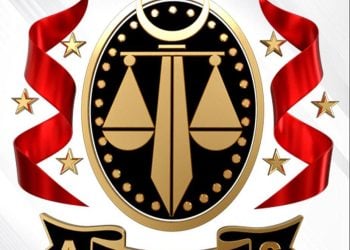By Sami Zaptia.
Tripoli, March 15: Libya’s National Transitional Council today released the details of the . . .[restrict]record LD 68.5-billion 2012 budget. Despite earlier reports that there would be a deficit and that it would have to be funded by dipping into assets, the figures announced show it as a balanced budget.
It is, unsurprisingly, overwhelmingly financed by Libya’s hydrocarbon revenues which, thanks to the prices of a barrel of crude on the international markets hovering just over the $100 a barrel for most of 2011-12 so far, it expected to rake in a gross LD 68.73 billion. Out of this total hydrocarbon revenue a deduction of LD 3.45 billion for servicing public debts is made leaving a net of LD 65.29 billion.
There is a further LD 3.2 billion of other revenues from taxation, stamp duty, customs duties, Central Bank of Libya profits and profits from the two telephone operators. In total, this leaves the Libyan authorities with a net war chest of LD 68.5 billion.
The biggest portion of the budget was the LD 19.1 billion allocated to Projects and Development Programmes and Reconstruction, closely followed by the LD 18.67 billion for wages and salaries. Subsidies for fuel, electricity and the Price Stabilization Fund used to subsidize essential food items were allocated LD 14.6 billion.
The LD 3.43 billion debt category covers the Retirement Fund, Investment Portfolios, the liquidation of failed state enterprises and payment for the re-purchase by the state of the shares of the Libyan Afriqiyah Aviation Holding Company.
The Ministry of Education is given the biggest ministerial slice of the budget — LD 4.6 billion, reflecting the government’s commitment to investing in people. The Ministry of Defence gets LD 4 billion, the Ministry of Health LD 2.91 billion and the Ministry of Interior LD 2.8 billion.
Electricity and Renewable Energies are given LD 2.5 billion, while Finance is provided LD 1.75 billion. This is followed by the Ministry of Higher Education and Scientific Research at LD 1.1 billion
The NTC and the Transitional Government made a point of promising strong local government in view of the demand for federalism coming from Eastern Libya. As a result the Ministry of Local Government is given LD 899 million.
Social Affairs is allocated LD 451 million whilst the Ministry of Transport which covers roads, airports and seaports receives LD 244 million
With all the challenges facing the interim government in the coming months, the need for good administrative governmance and planning has been a top demand by the Libyan public. However, the Ministry of Planning is given a paltry LD 19 million, whilst the Housing and Utilities has LD 95 million.
The government is under pressure to provide employment and training for thousands of thuwar (freedom fighters), therefore it was interesting to see that the Employment and Retraining Ministry is allocated a huge LD 2.9 billion.
The politically sensitive Martyrs’ Families and the Missing Ministry has been given LD 192 million.
The Ministry of Culture and Civil Society receives LD 265 million, whilst the Ministry of Youth and Sports is allocated LD 138 million.
The 2012 Budget
| Wages and salaries | 18.67 billion LD | |
| Operational expenditure | 12.13 billion LD | |
| Projects and development programmes and reconstruction | 19.11 billion LD | |
| Subsidies and price stabilisation | 14.60 billion LD | |
| General reserve | 4.0 billion LD | |
| Grand total | 68.52 billion LD |
Oil Revenue
| Gross Oil Revenue | 68.73 billion | |
| 5% public debt deduction | 3.45 billion | |
| Net oil revenues | 65.29 billion |
| 1. | Retirement fund | 500 million |
| 2. | Investment portfolios | 1.32 billion |
| 3. | Liquidation of public companies | 150 million |
| 4. | Payment for purchased shares of the Libyan African Airline Holding Company | 897 million |
| 5. | Other commitments | 568 million |
| Total | 3.43 billion |
| 1. | Net revenue from hydrocarbon incomes after deduction of public debt | 65.29 billion |
| 2. | ||
| 3. | Taxation on economic income activities and stamp duty | 500 million |
| 4. | Customs duties | 700 million |
| 5. | Public services duties | 271 million |
| 6. | Communications | 400 million |
| 7. | Distribution of Central Bank of Libya profits | 500 million |
| 8. | Revenue from price stabilization fund | 75 million |
| 9. | Local revenues from hydrocarbon sales | 776 million |
| 10. | Total | 68.52 billion |
[/restrict]






